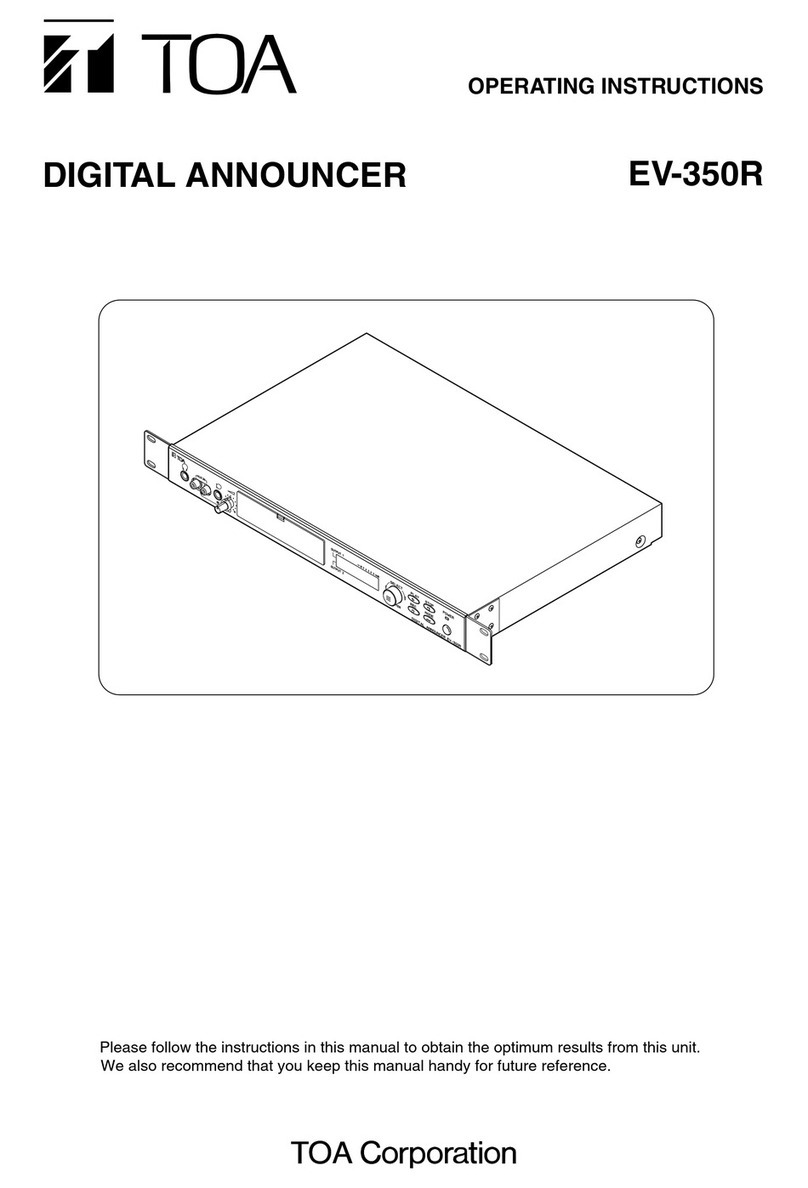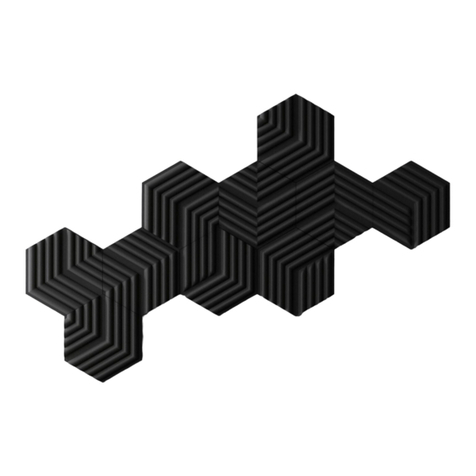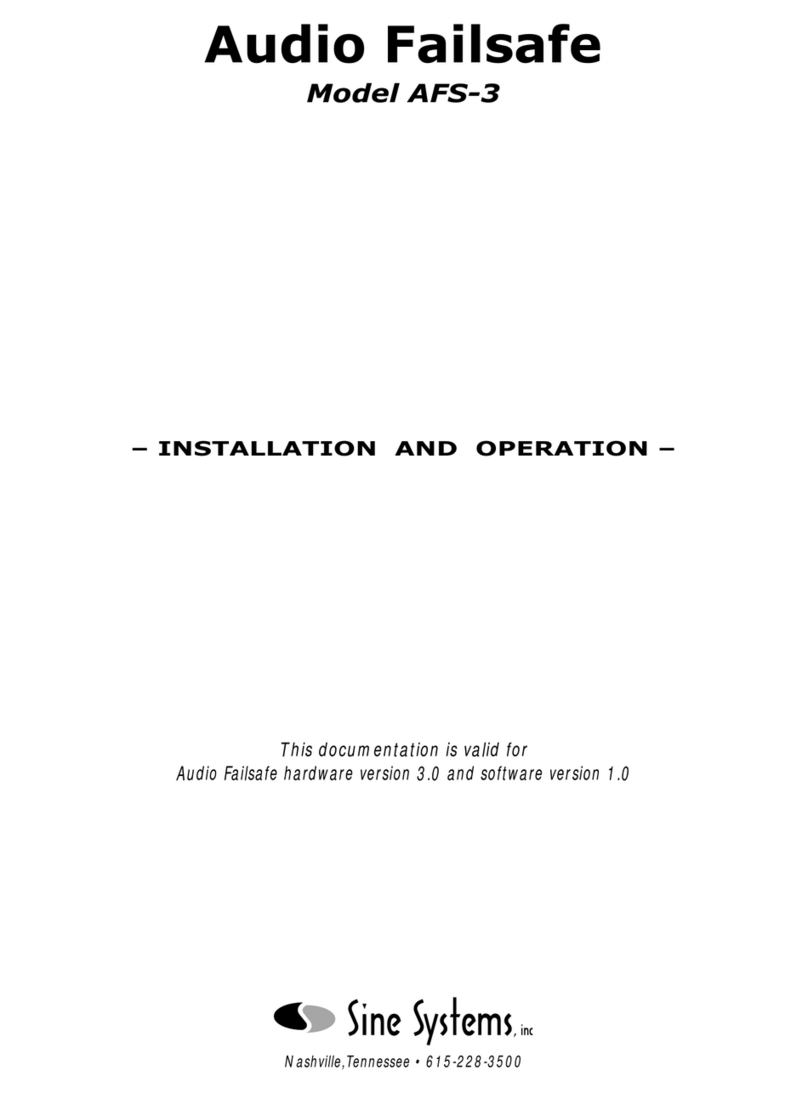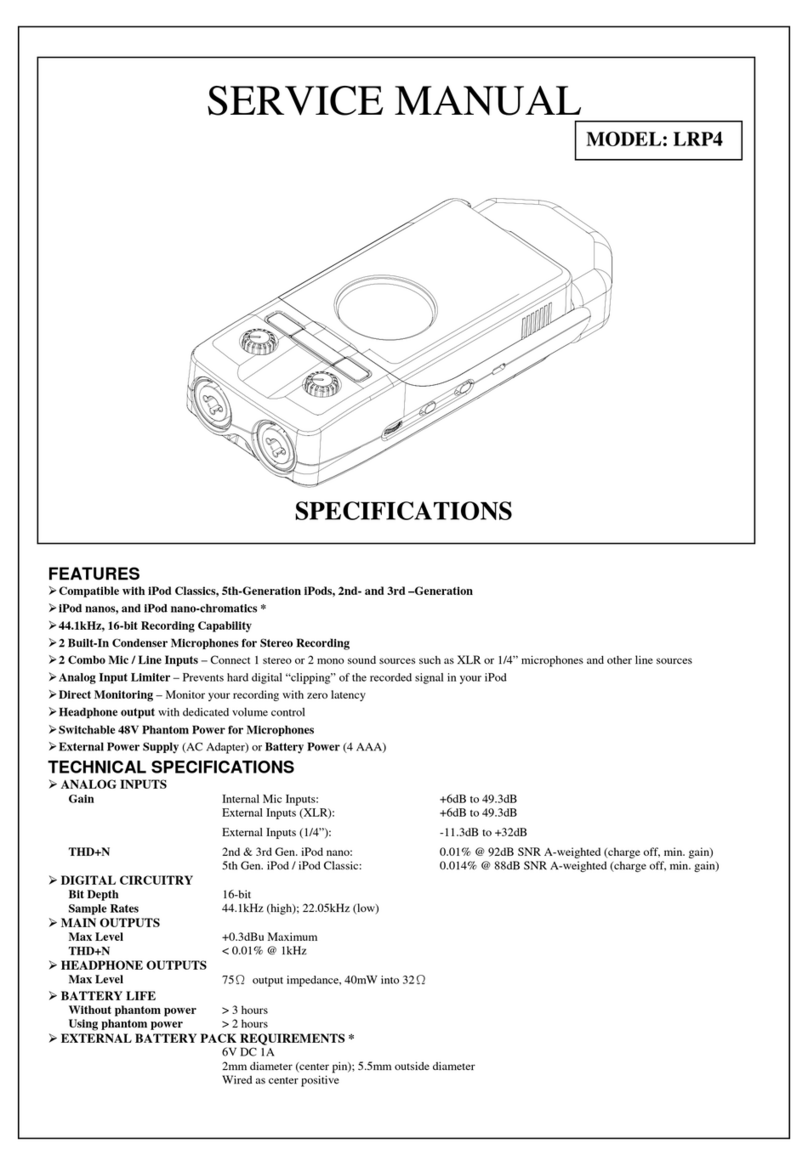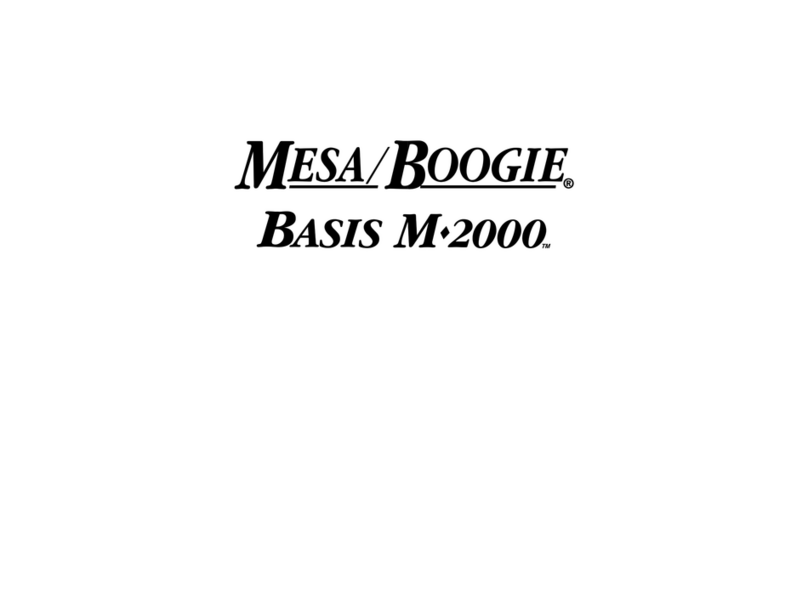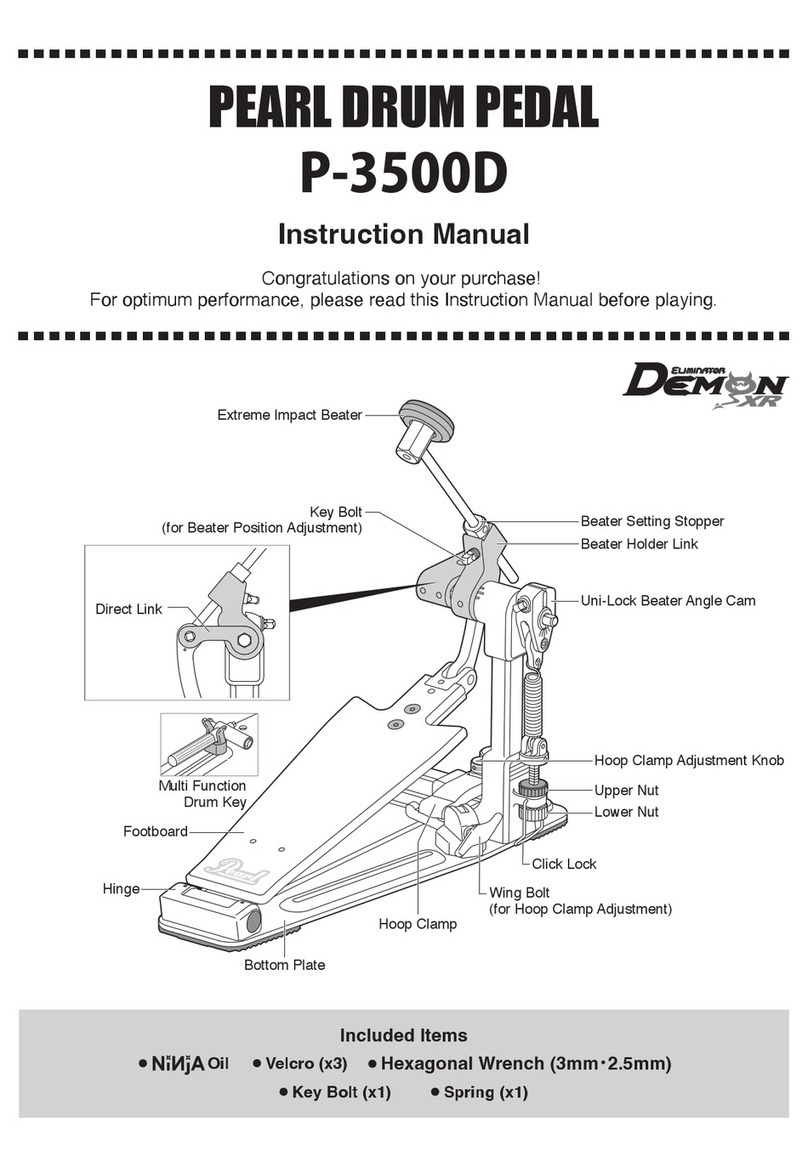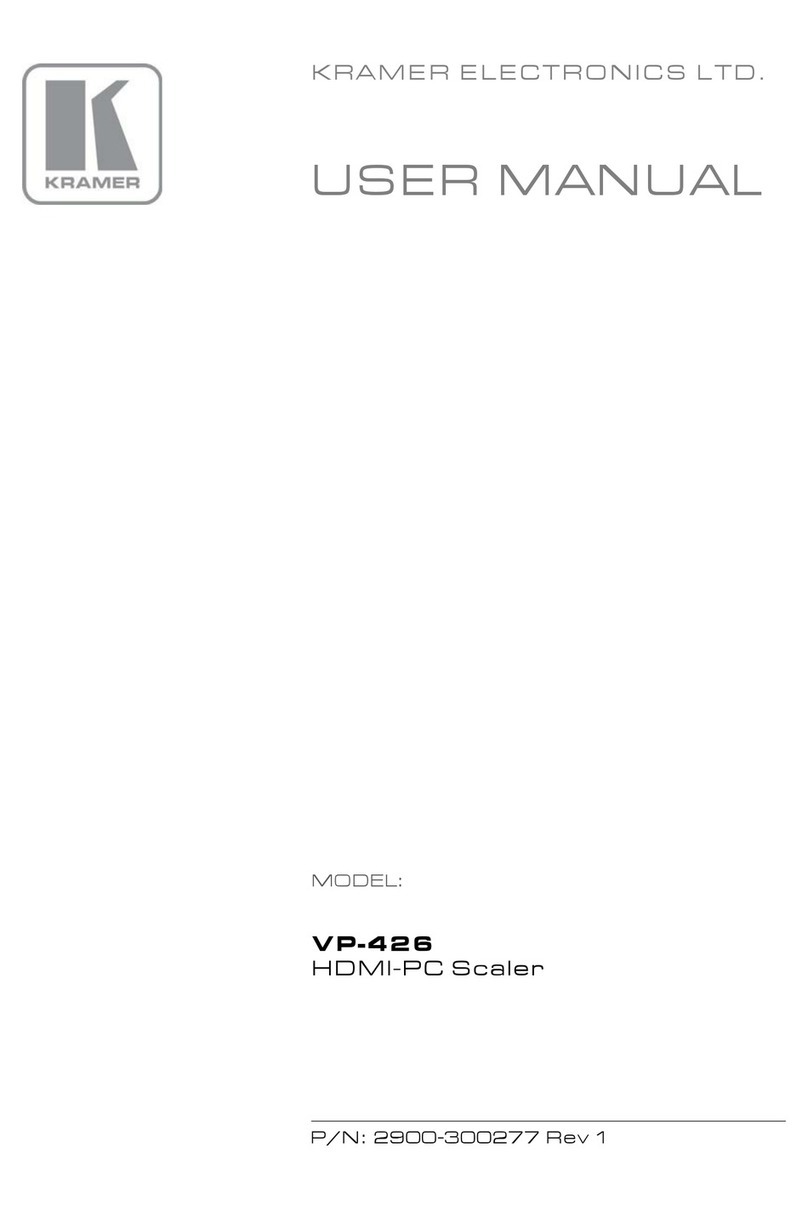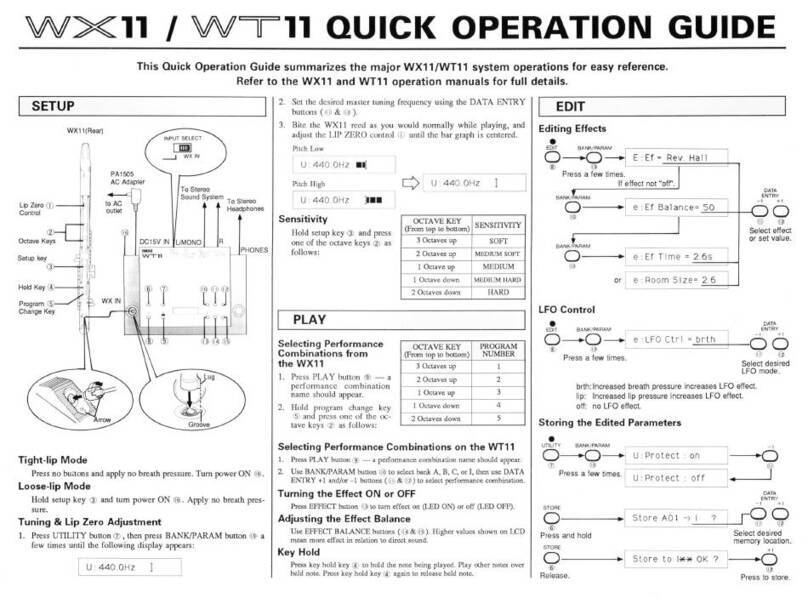Lexicon CORE-32 User manual

12T System User Guide

ii
Unpacking and Inspection
After unpacking the12T system modules, save all packing materials in case you ever need to ship the units. Thoroughly inspect the modules and
packing materials for signs of damage. Report any damage to the carrier at once; report equipment malfunction to your dealer.
Notice
This equipment generates and uses radio frequency energy and if not installed and used properly, that is, in strict accordance with the manufacturer's
instructions, may cause interference to radio and television reception. It has been type tested and found to comply with the limits for a Class A
computing device in accordance with the specifications in Subpart J of Part 15 of FCC Rules, which are designated to provide reasonable protection
against such interference in a residential installation. However, there is no guarantee that interference will not occur in a particular installation. If this
equipment does cause interference to radio or television reception, which can be determined by turning the equipment OFF and ON, the user is
encouraged to try to correct the interference by one or more of the following measures:
• Reorient the receiving antenna
• Relocate the computer with respect to the receiver
• Move the computer away from the receiver
• Plug the computer into a different outlet so that the computer and receiver are on different branch circuits.
If necessary, the user should consult the dealer or an experienced radio/television technician for additional suggestions. The user may find the following
booklet prepared by the Federal Communications Commission helpful:
"How to identify and Resolve Radio/TV Interference Problems."
This booklet is available from the U.S. Government Printing Office, Washington, DC 20402, Stock No. 004-000-00345-4.
Le présent appareil numérique n'émet pas de bruits radioélectriques dépassant les limites applicables aux appareils numériques de la class A
prescrites dans le Règlement sur le brouillage radioélectrique édicté par le ministère des Communications du Canada.
This triangle, which appears on your
component, alerts you to the presence
of uninsulated, dangerous voltage
inside the enclosure... voltage that may
be sufficient to constitute a risk of
shock.
This triangle, which appears on your
component, alerts you to important
operating and maintenance instructions
in this accompanying literature.
Copyright 1998, Lexicon Inc.
All Rights Reserved.
Lexicon Part #070-12131
Lexicon, Inc.
3 Oak Park
Bedford MA 01730-1441
Telephone 781-280-0300
Fax 781-280-0490
www.lexicon.com

iii
Table of Contents
1 GETTING STARTED
INTRODUCTION…………………………………………………………………………………………………………………………1
SYSTEM REQUIREMENTS ……………………………………………………………………………………………………………2
High Performance Systems ………………………………………………………………………………………………………2
SCSI Vs. IDE ………………………………………………………………………………………………………………………3
2 INSTALLATION
PRECAUTIONS …………………………………………………………………………………………………………………………4
HARDWARE INSTALLATION …………………………………………………………………………………………………………5
Setup ……………………………………………………………………………………………………………………………….5
Mount the PC-90 card onto the Core-32 card …………………………………………………………………………………6
Attach the PCI Extender ………………………………………………………………………………………………………….7
Install the Core-32/PC-90 assembly …………………………………………………………………………………………….8
Connect the LDI-12T Interface to Audio Sources………………………………………………………………………………9
SOFTWARE INSTALLATION …………………………………………………………………………………………………………10
Install Supported Third Party Audio Software…………………………………………………………………………………10
Install the Lexicon Studio Driver for Windows ........……………………………………………………………………......10
Install the PC-90 Software for Windows ..........………………………………………………………………………………11
Updating Driver and PC-90 Software …………………………………………………………………………………………12
Remove PC-90 Software……………………………………………………………………………………………………12
Update Studio Driver ………………………………………………………………………………………………………13
Reinstall PC-90 Software …………………………………………………………………………………………………15
System Connections ……………………………………………………………………………………………………………16
Front Panel Connections …………………………………………………………………………………………………16
Rear Panel Connections……………………………………………………………………………………………………16
Typical Configurations ……………………………………………………………………………………………………17

iv
3 CORE-32 BASICS
SIGNAL ROUTING .……………………………………………………………………………………………………………………20
CORE-32 CONTROL PANEL.…………………………………………………………………………………………………………21
CTRL I/O ………………………………………………………………………………………………………………………….22
REVERB …………………………………………………………………………………………………………………………25
PUNCH RECORD …………………………………………………………………………………………………………………28
Configuring the Punch Feature.……………………………………………………………………………………………29
The MIX Level Control...……………………………………………………………………………………………………29
TIMECODE AND SYNCHRONIZATION…………………………………………………………………………………………30
Setting up Cubase to Sync to Timecode.…………………………………………………………………………………31
Setting the Audio Sync Clock Reference…………………………………………………………………………………31
Sample Rates ………………………………………………………………………………………………………………32
Word Clock …………………………………………………………………………………………………………………32
Word Clock Sources ………………………………………………………………………………………………………33
Recording ……………………………………………………………………………………………………………………33
4 MMIO
COMPATABILITY ..……………………………………………………………………………………………………………………34
LEXPANEL.EXE ………………………………………………………………………………………………………………………35
Ctrl I/O ……………………………………………………………………………………………………………………………36
Reverb ……………………………………………………………………………………………………………………………39
PC-90 Routing ………………………………………………………………………………………………………………40
PC-90 Interface ……………………………………………………………………………………………………………42
PC-90 Presets ………………………………………………………………………………………………………………42
Punch Recor d ……………………………………………………………………………………………………………………43
Configuring the Punch Feature ……………………………………………………………………………………………44
The MIX Level Control………………………………………………………………………………………………………44
Timecode and Synchronization…………………………………………………………………………………………………45
Setting up the Audio Application to Sync to Timecode.…………………………………………………………………46
Clock Source ……………………………………………………………………………………………………………………47
Word Clock Sources ………………………………………………………………………………………………………48
Recording ……………………………………………………………………………………………………………………48

v
5 USING THE PC-90
BASIC OPERATION …………………………………………………………………………………………………………………49
The Interface ..……………………………………………………………………………………………………………………49
Inserting PC-90 within an ASIO Application ..…………………………………………………………………………………50
Routing an Audio Channel through the PC-90……………………………………………………………………………50
Selecting PC-90 and Making Settings ……………………………………………………………………………………51
Naming Effects………………………………………………………………………………………………………………53
Saving Effects ………………………………………………………………………………………………………………53
Loading Effects ……………………………………………………………………………………………………………54
Editing Effects ………………………………………………………………………………………………………………54
Using PC-90 within an MMIO Application ..……………………………………………………………………………………56
Routing an Audio Channel through the PC-90……………………………………………………………………………56
Making Settings for PC-90 …………………………………………………………………………………………………58
Loading Effects..……………………………………………………………………………………………………………58
Editing Effects ………………………………………………………………………………………………………………59
Naming Effects………………………………………………………………………………………………………………60
Saving Effects ………………………………………………………………………………………………………………61
BEYOND THE BASICS ………………………………………………………………………………………………………………62
Routing a Plug-In …………………………………………………………………………………………………………………62
Automating the PC-90……………………………………………………………………………………………………………66
6 REFERENCE
PC-90 ALGORITHMS …………………………………………………………………………………………………………………68
Ambience …………………………………………………………………………………………………………………………68
Chamber …………………………………………………………………………………………………………………………69
Concert Hall ………………………………………………………………………………………………………………………70
Inverse ……………………………………………………………………………………………………………………………70
Room ………………………………………………………………………………………………………………………………71

vi
THE PARAMETERS……………………………………………………………………………………………………………………72
Chorus ……………………………………………………………………………………………………………………………72
Crossover …………………………………………………………………………………………………………………………72
Decay………………………………………………………………………………………………………………………………72
Decay Level ………………………………………………………………………………………………………………………72
Definition …………………………………………………………………………………………………………………………73
Depth… ……………………………………………………………………………………………………………………………73
Diffusion …………………………………………………………………………………………………………………………73
Duration……………………………………………………………………………………………………………………………73
Echo Delays ………………………………………………………………………………………………………………………73
Echo Feedback …………………………………………………………………………………………………………………74
Effects Mix ………………………………………………………………………………………………………………………74
HF Rolloff …………………………………………………………………………………………………………………………74
Infinite ……………………………………………………………………………………………………………………………74
Input Lvl …………………………………………………………………………………………………………………………74
Link…………………………………………………………………………………………………………………………………74
Mid Rt and Bass Mult ……………………………………………………………………………………………………………74
Pre Delay …………………………………………………………………………………………………………………………75
Range and Rate …………………………………………………………………………………………………………………75
Reverb Level………………………………………………………………………………………………………………………75
Reflect Delays ……………………………………………………………………………………………………………………75
Reflect Levels ……………………………………………………………………………………………………………………75
Shape, Spread ……………………………………………………………………………………………………………………76
Size ………………………………………………………………………………………………………………………………76
Slope ………………………………………………………………………………………………………………………………76
Spin ………………………………………………………………………………………………………………………………77
Treble Dcy…………………………………………………………………………………………………………………………77
PRESET DESIGN………………………………………………………………………………………………………………………78
Notes on Preset Design …………………………………………………………………………………………………………78
Random Delay Elements…………………………………………………………………………………………………………79
Creating a Realistic Sound………………………………………………………………………………………………………79
PC-90 PRESET DESCRIPTIONS ……………………………………………………………………………………………………81
PC-90 Bank 1: Environments……………………………………………………………………………………………………81
PC-90 Bank 2: Applications ……………………………………………………………………………………………………89

vii
APPENDIX A
STEINBERG CUBASE VST …………………………………………………………………………………………………………A-1
The def.all file…………………………………………………………………………………………………………………… A-1
The Templates ………………………………………………………………………………………………………………… A-1
Recording ………………………………………………………………………………………………………………………A-2
Cubase Record Settings ………………………………………………………………………………………………… A-2
Audio System Setup………………………………………………………………………………………………… A-2
Audio Performance ……………………………………………………………………………………………………… A-2
MIDI Sync Reference ……………………………………………………………………………………………………A-3
Audio I/O…………………………………………………………………………………………………………………… A-3
Monitoring ……………………………………………………………………………………………………………… A-4
Multi-Record ………………………………………………………………………………………………………………A-4
Assigning Input Channels…………………………………………………………………………………………………A-5
Timecode……………………………………………………………………………………………………………………A-7
Automation …………………………………………………………………………………………………………………A-9
Monitor Mixer Automation .………………………………………………………………………………………………A-10
APPENDIX B
ROUTING PC-90 REVERB VIA THE AUX SENDS IN VST ………………………………………………………………………B-1
PC-90 CASCADE ROUTING…………………………………………………………………………………………………………B-2
MONITORING PC-90 WITH NO LATENCY WHILE RECORDING ………………………………………………………………B-4
USING THE PC-90 AS OUTBOARD GEAR…………………………………………………………………………………………B-6
APPENDIX C
INSTALLATION TROUBLESHOOTING ……………………………………………………………………………………………C-1
PC TROUBLESHOOTING……………………………………………………………………………………………………………C-3
OPTIMIZING WINDOWS FOR AUDIO APPLICATIONS.…………………………………………………………………………C-5
COMMON PROBLEMS AND SOLUTIONS ………………………………………………………………………………………C-11
Installation and Hardware Recognition………………………………………………………………………………………C-11
Audio Errors.……………………………………………………………………………………………………………………C-15
PC-90 Problems..………………………………………………………………………………………………………………C-18
SYNC …………………………………………………………………………………………………………………………………C-19
POOR SYSTEM PERFORMANCE…………………………………………………………………………………………………C-19
POPS AND CLICKS…………………………………………………………………………………………………………………C-19

viii
APPENDIX D
SPECIFICATIONS ……………………………………………………………………………………………………………………D-1
LDI-12T ..…………………………………………………………………………………………………………………………D-1
Core-32 ..…………………………………………………………………………………………………………………………D-3
PC-90..……………………………………………………………………………………………………………………………D-3

1
Getting Started
Introduction
Thank you for your purchase of a Lexicon Studio system. Lexicon Studio is a line of professional
hardware components designed for your computer that provides uncompromised audio quality
and extensive processing capability. This family of products is designed to allow you to tailor your
working environment to your needs. Lexicon Studio provides I/O options, DSP, signal routing,
and synchronization for industry leading software.
Although written to accommodate both novice and expert users, this manual assumes some
familiarity with the software application you have selected to interface with Lexicon Studio. If you
have questions concerning the use of your software application, please refer to the user manual
provided by the manufacturer of the software before using your Lexicon Studio system.
Electronic PDF documentation containing late-breaking information is provided on CD-ROM with
your Lexicon Studio system, along with electronic documentation for the PC-90. These PDFs
have information that may be crucial to operating the latest version of the software you are using.
The electronic documentation always supersedes the information in your printed manual. Please
read it carefully, and always look to our website at www.lexicon.com for the latest updates in both
software and documentation.
The electronic PDF documentation has a Table of Contents. To return at any time to the Table of
Contents, click on the staff at the top of the page.

2
System Requirements
The following system is recommended as the minimum for working with Lexicon Studio and
Steinberg Cubase Audio VST:
•200 MHz Pentium Processor or compatible equivalent (Intel processors are also highly
recommended.)
•64 MB of RAM
•Audio-capable disk drive
•Microsoft Windows — 95™, 98™ or later
High Performance Systems
Popular software packages like Cubase VST, Logic Audio and StudioVision Pro all show
performance improvements with high CPU speeds and additional RAM. A high performance
system benefits from the following:
•Fast CPU — Intel is the best PC choice. CPUs from other manufacturers often don’t perform
as well at the same rated clock speeds and may have variant implementations of important
sections like the FPU (Floating Point Unit).
•A system “boot” drive and a separate drive for audio
•A reliable video card with current drivers. Some cards offer acceleration that “hog” the PCI
bus and creates data logjams.
•AGP (Advanced Graphic Port) capability for the graphics card is preferable as it gets the video
off of the PCI bus.

3
SCSI Vs. IDE
Both SCSI and IDE offer distinct advantages and disadvantages:
Benefits Liabilities
SCSI • Fast bus performance • Use of a PCI card to interface
• Removable media to the computer increases bus
• Choice of many high traffic, especially if multiple PCI
performance drives cards are in the system
IDE: • Drives approach SCSI • The IDE bus is slower (in most
performance cases this is NOT the limiting factor)
• Inexpensive • Fewer model choices
• Using the IDE bus decreases • Limited removable media
activity on the SCSI bus
Stay tuned on our WEB site for the latest recommendations as technology changes.

4
Installation
Depending on your computer, installation of your Lexicon Studio system should take about 20
minutes. Please read through the entire procedure before performing the installation. Lexicon
Studio works with third party software (such as Steinberg Cubase VST or Sonic Foundry’s Sound
Forge) which should be installed prior to installing the hardware and software for Lexicon Studio.
Refer to your audio software user manual on how to accomplish this.
Precautions
•Turn off and unplug your computer.
•Use the anti-static wrist strap provided with your system and make sure that you are grounded
during the entire installation process to prevent static charges that can damage components.
•Put the anti-static bags containing your cards near your computer to avoid walking around with
a card and generating static electricity after it is removed from its bag.
•Before handling any Lexicon Studio cards, discharge any personal static electricity that may
be on your clothes or body by touching a grounded metal surface, such as the power supply
case inside your computer.
•Handle the cards only by their edges, as you would a CD. Avoid touching the pins on the
bottom edge of the cards.
•Save the anti-static bags containing your Core-32 System card and PC-90 module. These
prevent static electricity from damaging sensitive electronic components on the cards.
Whenever cards are removed from your computer, they should be stored in these bags.

5
Hardware Installation
Windows 95 and 98 will automatically detect and recognize installed Lexicon Studio hardware on
restart. Windows will also prompt you to install drivers at this point. As some Lexicon Studio
software is installed into directories of your audio control software (such as Cubase Audio VST),
you should install and verify that your audio software launches properly before installing Lexicon
Studio (even though it will not be audio-capable until installation of the Lexicon Studio system).
Please refer to your audio software manual for details on installation, and then proceed with
Lexicon Studio hardware and software installation.
Setup
1. Put on the anti-static wrist strap.
2. Place the foam from your Lexicon Studio package on top of a work surface next to your
computer. (Any flat piece of static-safe foam with similar dimensions to the Core-32 card can
be used.)
3. Make sure that you computer is properly shut down and unplugged.
4. Remove the computer top cover and PCI slot cover(s) for the slots you’ve chosen for your
Lexicon Studio cards. If you do not know how to open your computer, consult the
manufacturer’s owner’s manual.
5. Touch the computer power supply case to discharge any personal static electricity.
6. Remove the Core-32 from its anti-static bag, holding the card only by its edges. Be careful to
avoid touching the pins on the bottom edge of the card. Place the Core-32 bag on top of the
foam and place the card on the foam with the white PC-90 connector facing up.

6
Mount the PC-90 card onto the Core-32 card
The PC-90 module can only be mounted onto a Lexicon Studio Core-32 system card. Attempting
to attach your PC-90 to any other type of PCI card may damage your PC-90 module.
1. Touch the computer power supply case to discharge any personal static.
2. Remove the PC-90 module from its anti-static bag, holding the card only by its edges. Place
the bag on your work surface next to your computer and place the PC-90 on it with its white
connector facing up.
3. Pick up the PC-90 card and orient it so that the connector side faces away from the palm of
your hand.
4. Pick up the Core-32 card in your other hand. Orient the cards with their connector sides facing
each other and align the connectors at the top of each card. Firmly press the cards together
until they connect fully. The holes on the edges of the Core-32 card should be aligned with
the standoffs on the PC-90 card.
5. Once the cards are mated, place the assembly, with the Core-32 card on top, onto the Core-
32 anti-static bag. Use the four screws provided to attach the PC-90 to the Core-32 card. Do
not overtighten the screws, as you may damage the PC board.

7
Attach the PCI Extender
The extender provides support for cards installed horizontally and prevents boards from touching
each other (which can damage the cards). To attach the extender:
1. Holding the Core-32 assembly by its edges, align the holes of the board and the extender.
2. Insert two screws (provided) from the back of the Core-32 card as shown. Do not overtighten
the screws, as you may damage the PC board.

8
Install the Core-32/PC-90 assembly
The Core-32 System card must be installed in a full-size PCI slot which is a bus master slot to take
advantage of its bus master capabilities. Refer to your computer owner’s manual to determine
which slots are available as bus masters. (On some older motherboards, the PCI slot next to the
ISA bus connector [the PCI/ISA/ shared slot] is not a PCI bus master slot).
1. Verify that third party audio software is installed and launches correctly.
2. Touch the computer power supply case to discharge personal static.
3. Pick up the Core-32/PC-90 assembly by the top of the metal bracket and the top of the other
end of the card.
4. Align the card assembly over the slot you’ve chosen and insert it.
5. Place one hand along the top edge of the card and push down firmly until the card is fully
seated in the slot. Do not use excessive force.
6. Once the card is fully seated, attach the Core-32 bracket to the computer chassis with the
screws provided with your computer. If the computer is a tower or mini-tower design, check to
see that boards are not bending under their own weight and shorting against each other.
7. Replace the cover on the computer. Do not operate the system without the cover.

9
Connect the LDI-12T Interface to Audio Sources
Cables/Connections
1. Use only the proprietary Lexicon cable (provided) to connect the Core-32 card to the LDI-12T
Interface.
2. With both the computer and the LDI-12T powered down, attach the cable between the lower
connector on the back of the Core-32 card and the Computer port on the LDI-12T rear
panel.
3. Connect the 9V connector to the AC Power port on the rear panel of the LDI-12T, and plug
the other end into a wall socket.
The LDI-12T supports various formats of analog and digital I/O. Make certain your cables are the
correct types prior to connection. (Analog XLR connectors are +4dBu balanced (Pin 2 hot) ,
analog RCA connectors are –10dBV unbalanced). To select a source for input or output within
the application software, refer to the documentation provided with your particular software
package
When powering up your system, always make sure to turn LDI-12T power on prior to turning on
your computer. This ensures that diagnostics and calibrations necessary for optimum
performance are performed upon starting up your computer system.

10
Software Installation
Install Supported Third Party Audio Software
Lexicon Studio requires compatible front-end software (such as Cubase Audio VST) to operate.
Please refer to your particular software installation guide for assistance. As Lexicon Studio installs
software within directories of your front-end software, you should install your audio software first
and verify that it launches properly before installing Lexicon Studio (even though it will not be
audio-capable until installation of the Lexicon Studio system).
If you are installing a later version of Lexicon Studio software over your current Studio software,
please skip to the next section entitled Updating Driver and PC-90 Software.
Install the Lexicon Studio Driver for Windows
1. With your Lexicon Studio hardware and third party audio software installed, power up LDI-12T
interface and your computer. Once your computer is fully booted, Windows will identify your
Core-32 as a new PCI multimedia device. In the event of booting problems, refer to the
troubleshooting section of this user guide.
2. The Windows Update Device Driver Wizard will appear. Insert the “Lexicon Studio: Drivers &
Documentation” CD-ROM , and click the Next > button, allowing Windows to perform a
search for the Lexicon Studio driver.
3. Windows will find the driver information for the Lexicon Studio Sound System on the
CD-ROM (if it does not, you may need to Browse to it. Additionally, you may also need to
Browse to the CD-ROM for a file entitled asiolex.dll. Click the Finish button.
4. When the drivers are loaded, you will be prompted to restart your computer. If you are also
installing a PC-90, you should choose not to restart at this time and proceed to the
instructions for installing PC-90 software within the next section. Windows will prompt you
twice to restart. Select No at both prompts and move on to the next section, Installing the PC-
90 Software for Windows. If you are only installing Core-32 drivers, you may now restart your
machine.

11
The Installer will remove any prior versions of this software found in your system and place all
components as required. Following is a list of files installed and their locations:
File Location
asiolex.dll C:\LxStudio
Core32.dll C:\LxStudio
Coredsp.pci C:\LxStudio
Corefpga.bin C:\LxStudio
Corev40.bin C:\LxStudio
Diagv40.bin C:\LxStudio
Lexpanel.exe C:\Windows\System
lxstudio.inf Installs as LexiconStudio.inf within C:\Windows\Inf\Other
mmids.drv C:\Windows\System
dll32.dll C:\Windows\System
Core32.vxd C:\Windows\System
lexmtc.drv C:\Windows\System
launchpanel.exe C:\Windows\Start Menu\Programs\Startup
Install the PC-90 Software for Windows
1. Insert the “Lexicon Studio: Drivers & Documentation” CD-ROM if you haven’t already.
2. Open the contents of the CD-ROM and double-click on Setup.exe to launch the Installer.
3. Read the Directory Path Warning and then click OK.
4. Click Next > at the Installer welcome screen.
5. Make certain that the installer is directed toward the desired plug-in folder (example:
C:\..\Cubase Audio VST\vstplugins) and click Next >.
6. At the summary screen, select the desired software and click Next > to choose it.
7. Click Next > to begin the installation.
8. Click Finish to complete the PC-90 software installation.
9. Restart your computer (even if you’ve already restarted after installing the Core-32 Drivers).

12
Installing the PC-90 software will file it within Windows program registry. To remove or update this
software, remove the PC-90 install by using the Add/Remove Programs control panel,
highlighting UnLexiconPC90, and selecting Remove. This control panel is located at
Start/Settings/Control Panel/Add/Remove Programs.
Updating Driver and PC-90 Software
If you are installing a newer version of Lexicon Studio software over your current software, follow
the steps outlined below.
Remove PC-90 Software
As PC-90 software is registered through the
Windows Add/Remove Programs control panel, it
must be completely removed to install a newer
version. You should never have 2 different versions
of PC-90 software installed simultaneously. To
deinstall PC-90:
1. Go to Start/Settings/Control Panel /Add/Remove
Programs.
2. Scroll down to UnLexiconPC90.
3. Click the Add/Remove button.
4. Click the Yes button when asked “Are you sure
you want to completely remove ‘UnLexiconPC90’
and all of its components?”.
5. Click OK to close the control panel.
Other manuals for CORE-32
1
Table of contents
Other Lexicon Music Equipment manuals
